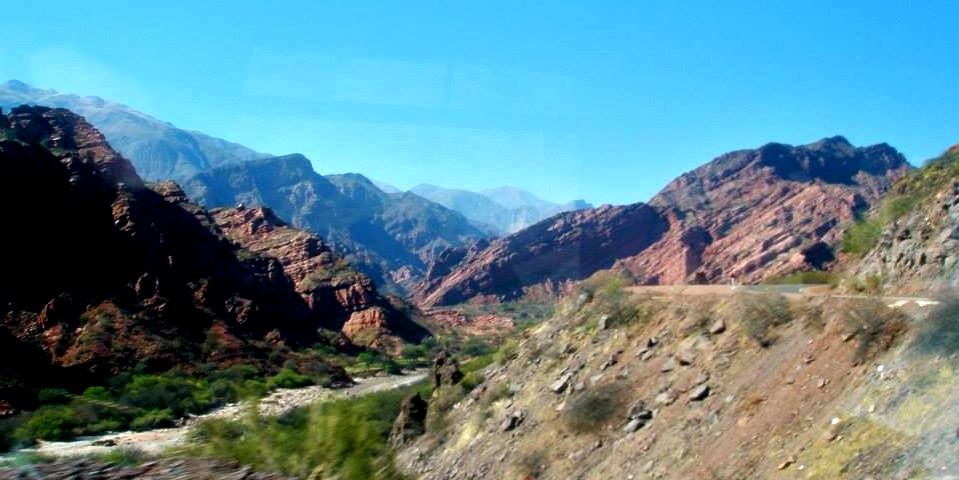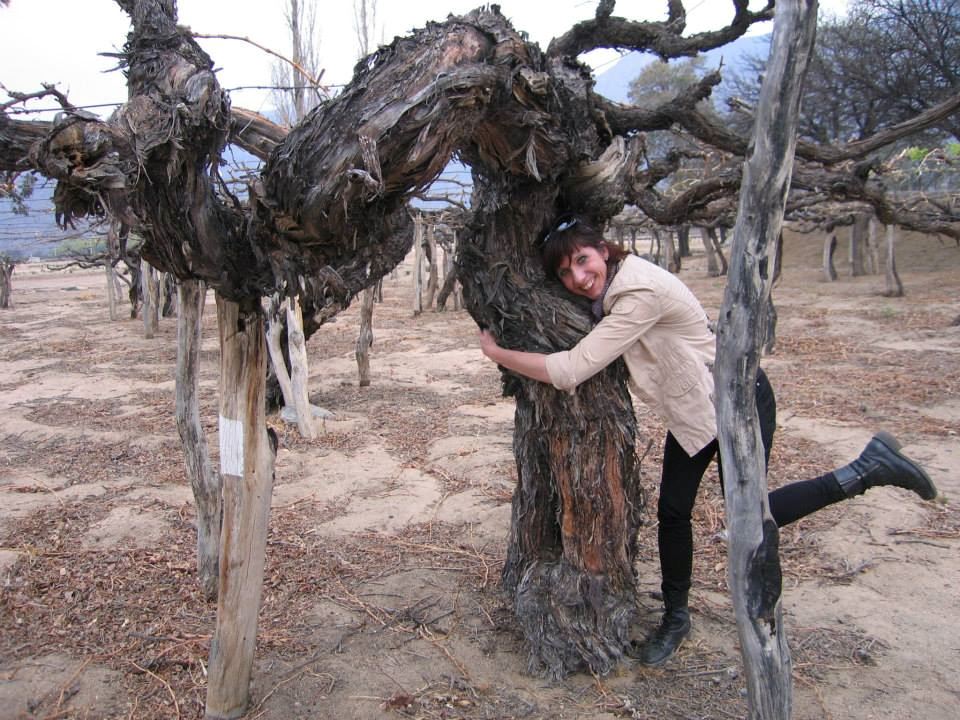When it comes to the wine regions of Argentina, Mendoza always takes center stage. Rightly so, with its flagship red wine, Malbec, topping the consumers market over the last decade or so. The vineyards in Mendoza are known for their crystal blue skyscapes reaching down to the mighty peaks of the Andes mountain range with lush vineyards at their feet.
But if you were to travel about eight to ten hours north on a spectacular road trip following the mountain range on the west - be sure to stop of at Valle de la Luna - you would find yourself on what seems like another distant land.

Nestled in the south-west corner of the Province of Salta, Argentina is Cafayate, home of the highest vineyards of the world. The Mendoza wine region sits at around 2,000 to 3,000-feet (600 to 1,100-meters) above sea level, which of course is a feat in itself. However, the vineyards here in Cafayate of Salta sit at and around 5,522 to over 6,000-feet (1,700 to 2,000-meters) above sea level. Have a walk around the vineyards and you will not only need a nice sunhat to keep the bright and close sun from kissing and blushing your cheeks and nose, but you’ll need to stop and take a good breath.
The town of Cafayate is population by around 12,000 people, but those who are here, those who make wine and grow the grapes in these unique soils are what makes this a special place. The town also boasts a hearty selection of quaint, but highly regarded restaurants just around the main square.
Take vineyard tours and kick around in the dusty earth until it sparkles your shoes. There's mica in the soil here, and by the end of your walk, it will look as if fairy dust has been sprinkled on them. After you've walked through some of the vineyards and taken in the rare air and views of the valley floor below, taste the wines here, have some local Salteño foods, which rightly go along deliciously with the wine produced in this region. If you visit any winery and make an appointment, they are sure to treat you with some local empanadas and the classic regional dessert of goat cheese, dried apricots or figs with a drizzle of cane sugar honey, a perfect pairing for their signature white wine, Torrontes.
Aside from wine, this is an outdoor lover's’ paradise for mountain biking, horseback riding or some good 4x4 adventure.
Salta, La Linda and Cafayate
If you remember even a little bit of Spanish from high school or college, you might remember that La Linda translates as "The Pretty." Once you arrive here, this name will make sense as you witness for yourself its beauty in every corner.
Aside from the altitude, what makes the wines here so special and unique?
With vineyards at such high altitudes, they reach up and grow along the trellises, with a green canopy within closer proximity to the sun than on any other vineyard. These high altitudes and the high desert climate places the water table about 300-meters below the surface of the soils. And while grapevine roots can dig down a couple meters or more in search of needed water and minerals, they aren’t going to go that deep. This is a pretty harsh environment, but the pioneers of vineyard cultivation have gotten creative and scientific in their approach to make it all work.
Most vineyards will have drip irrigation to water the vines in much needed times. However, there are some who do it the old-fashioned way. They’ll dig ditches alongside the rows of vines and flood the vineyard in the spring. The water flows from the reservoirs for a couple weeks at the most, and then the water is shut off. This is the only water the vines will have for the rest of the growing season, that is, unless it rains. But with an average of less than 250mm of precipitation per year here, that is unlikely.
With proper canopy management during the growing season, however, the vines and fruit will get all the protection they need. The unique way in which they use an overhead grape trellising system allows for the canopy to grow and cover the top of the trellis system, showering them with much-needed shade to protect the maturing fruit during mid-summer and mid-day when the sun can be quite intense.
While some protection can be aided by vineyard management, the grape in itself has an amazing ability to adapt to harsh conditions. In order to protect the seed, being the future of the vine, the grape will grow thicker skins, meaning there is less pulp and as the grape matures in aromatics, flavors and sugars will be enhanced and more concentrated. These are the key characteristics to make a quality wine.
It is well-known that Mendoza is famous for Malbec. Salta grows Malbec as well, but their most famous red wine grape is Tannat. The grape was brought by Basque settlers in the 19th century, but it originates from France where it is still grown in the southwest near the Pyrenees mountain range. The Tannat grape is a bluish-black fruit, which grows medium-sized berries in semi-loose bunches. The skins are fairly thick, producing wines full in body and high in tannin. The wine’s color is almost opaque and ranges from a deep garnet red to violet, and the typical characteristics of the wine are nuances of mature summer berries and dark plum. To balance the body of these wines, they are aged in dark toasted barrels to impart characteristics to complement the fruit with a little smoke and warm spices. As these wines have a lot of character and tannin, they also make for great collector wines.
The famous Torrontes of Salta
While Argentina is known for their red wines, it would not be fair to speak of Salta without talking about their famous white, Torrontes. Salta is the only known region in the world where this famous white grape grows. It is a cross of the Torontel and the mission grape and it was originally believed to have been brought to Argentina by migrants from Galicia. However, DNA studies show otherwise, as Torrontes has no relation to the grape of the same name in Spain. There is still speculation on how the grape arrived in Argentina.
Regardless of history, the grape and its wine are noteworthy. Some of Cafayate’s best Torrontes are found at over 6,000-feet above sea level. It is here where the grape might struggle, yet will mutate to harsh conditions making for amazing wines. The signature aroma of the wine is orange blossom, and wines can range from light-bodied dry styles to sweet late harvest styles and everything in between. (If you love spicy Thai food, the late harvest styles are an amazing pairing.)
The wines exude notes of sweet citrus, clementine, apple and pear blossoms and many other white spring flowers. As the grapes are grown in sandy soils containing mica, the wines also have a strong spicy minerality on the finish, much like the famous German "spicy" wine, Gewurztraminer.
Must-See Wineries of Cafayate…
When in Cafayate, be sure to visit these notable wineries:
Bodega Etchart - where you can taste great wines and visit 152-year-old vines!

(Sommelier Madison Reid in Bodega Etchart with a 152-year old vine!)
El Porvenir, a boutique winery of the famous Paul Hobbs
Bodega Domingo Hermanos - where you can get a fantastic view of the valley below and view their lovely cactus gardens.
San Pedro de Yacochuya, just above Bodega Domingo Hermanos where you can taste the very first high-end wines of this region and the first to be exported.
*Note: If you do happen to have the opportunity to visit these wineries, do hire a driver, not only for the fact that you will be able to enjoy as much wine as you want without the danger of driving, but most roads will need an off-road vehicle and some aren’t even marked.
Traveling around the world to wine regions and estates is a cultured and exciting way to get to know wine from its source. It's my pleasure to share these experiences with you, and I encourage you to visit a few as well.
Learn more about the wine regions in Argentina in "Experiencing Mendoza With Adventure Consultants!"
